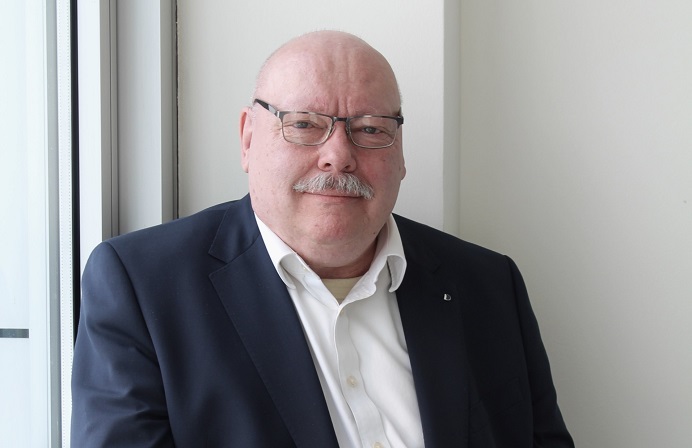
SHARWOOD: What would you say is the most significant trend shaping technology in the insurance sector right now?
COOK: Focusing on Property & Casualty, I would have to respond by declaring that a corollary of trends rather than a single driver is shaping strategic thinking and the operating models required to underpin execution of such: globalisation, competitive pressure in developed insurance markets, falling rates, complexity of emerging markets and changing customer habits would all conspire against the overriding macro trend in our industry. For the last decade expectations of our investors have moved most carriers to demand continual increases in underwriting profit. We can no longer depend on investment income to generate strong dividends – as might have been the case many years ago. There is tremendous scope for thought leadership as a driver of sustainable competitive advantage in our industry. Our sector has not even begun to go through the consolidation seen in others – like retail banking. Compared with other financial services sectors and retail, we are somewhat behind the curve as an industry. As such, we have great potential for innovation and transformation around operating models and it is abundantly clear to our board that technology must play a significant role in this.
SHARWOOD: How has increased regulation impacted the way you approach your role as CIO?
COOK: The process is: anger, followed by denial and then moving towards acceptance and ownership/action.
In the 5 years I have held this position, we have gone from 3 in-country regulators to 13 that require actuarial sign-off in addition to the CFO/COO/CEO. All of your readers will be feeling the proportional expansion of regulatory scope irrespective of geography or market maturity. We have started to adopt a risk management approach to all of our investments and the systems portfolio. Sarbanes Oxley in particularly helped us to improve internal controls which – in turn – generate small increments in expense headroom. Embracing risk control can drive efficiency but it is painful getting there. The compliance mindset has always resonated with IT folks. We need to leverage that.
SHARWOOD: Security has fast become the competitive differentiator between banks. What do you consider to be the unique selling point, or key differentiator, between competing insurance organisations today?
COOK: Fundamentally we are an industry whose customers really do not like us or what we sell – that is until they experience a significant loss. Even then it is questionable. I don’t see folks queuing up on YouTube to stream videos of our CEO pronouncing the latest breakthrough in our product. As such, competitive advantage is largely around price versus coverage. That said, ease of doing business with your insurer is increasingly becoming an attractor. Generation Y will want this to be easy and from anywhere. The changes afoot in our sector mean an expansion of the distribution channels. So from these perspectives, we need continual focus on privacy and security – and not just in the e-commerce domain.
SHARWOOD: You have expressed views in the past that business process management (BPM) software is ineffective unless it’s coupled with service oriented architecture (SOA). Do you think the two systems together are a silver bullet? If so, why?
COOK: BPM & SOA are indeed a powerful combination, but only if they are seen as part of a thoughtfully designed and controlled enterprise architecture. Any CIO who views any single one of his/her ‘machines’ as a silver bullet may be in the wrong job.
SHARWOOD: Business intelligence is touted as an essential discipline for data rich organizations like insurers. Do you agree and what does your BI infrastructure do for your business?
COOK: That is because the people who are touting it are also selling product! “Business” and “Intelligence” often come across as something of an oxymoron from some of those sales folks. But seriously … Chubb has been talking about “A single version of the truth” long before the advent of “BI”. Any organization balancing price against risk – whether insurer or investment bank – you are asking your underwriters/traders to gamble with the company’s assets as the stake – on a daily basis. Cleary this cannot be done profitably without reliable and consistent information upon which to make informed decisions. BI tools and methodologies can be useful but only when used on top of a thoughtfully designed and controlled enterprise information architecture.
SHARWOOD: The issue of financial services organisations off-shoring their IT systems is a controversial one. What limits should be set around services which are sent offshore and those which are kept onshore?
COOK: The only companies in the world who don’t have something off-shore are those only operating only in a single territory. Globalisation is here to stay. So is competitive pressure. Agility and adaptability should be in every organization’s goals. So from this perspective every CIO needs to consider all options.
SHARWOOD: What are the top three IT projects and strategies set to dominate Chubb Insurance’s agenda within the next 12 months?
COOK: Chubb in investing very seriously in the Asia Pacific region. We have a program of multiple projects which we call OPERA: Operating Platform for Efficiency, Responsiveness and Adaptability. This is a transformational initiative that will facilitate new business model, distribution effectiveness and operational excellence at every level of our business. This is going to keep us pretty busy for several years.
SHARWOOD: Every IT leader, particularly at your level, has a legacy they wish to be remembered for. From the perspective of a CIO for the Asia Pacific, what is yours?
COOK: I would want people to remember: “He was a little weird but he helped me to become more successful in my own career”.





